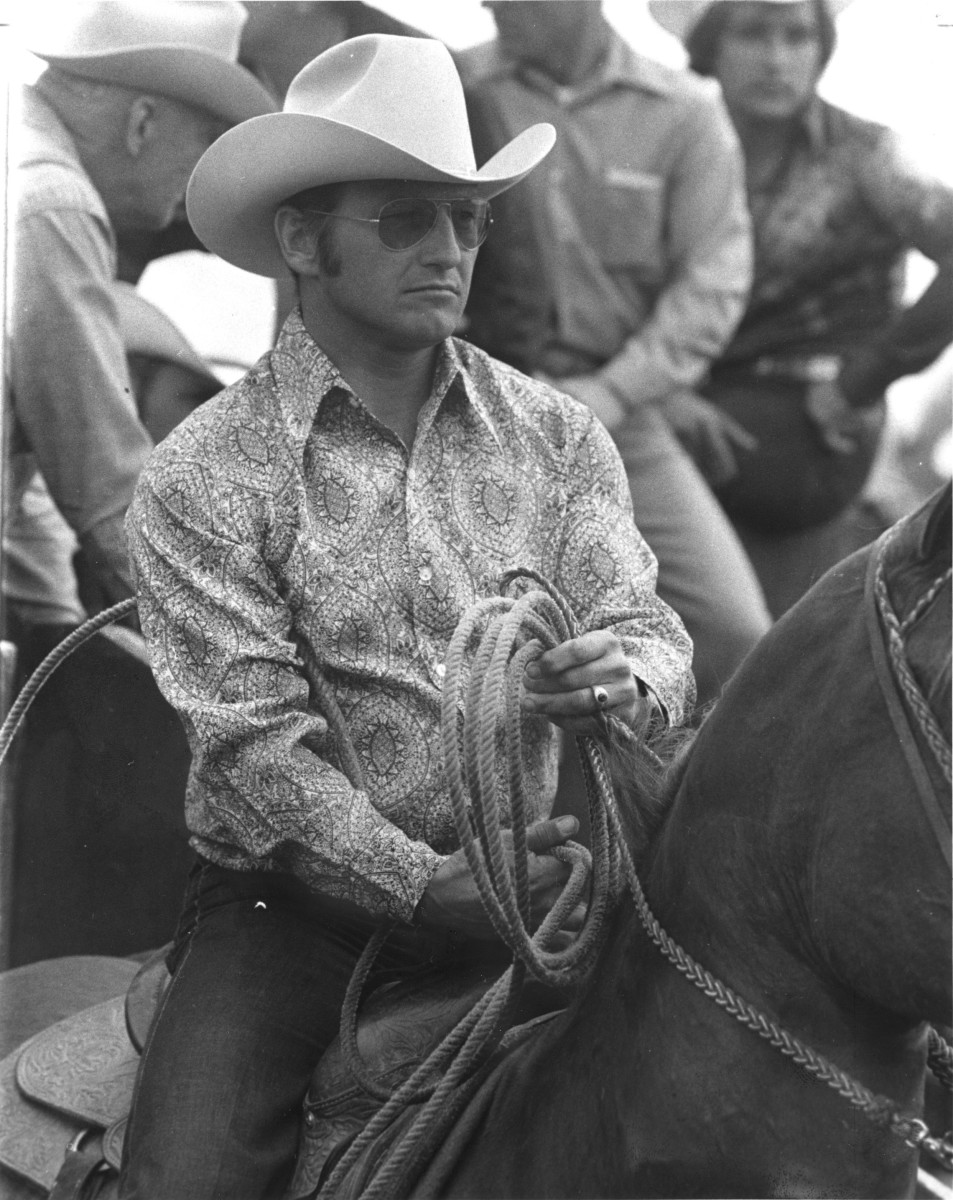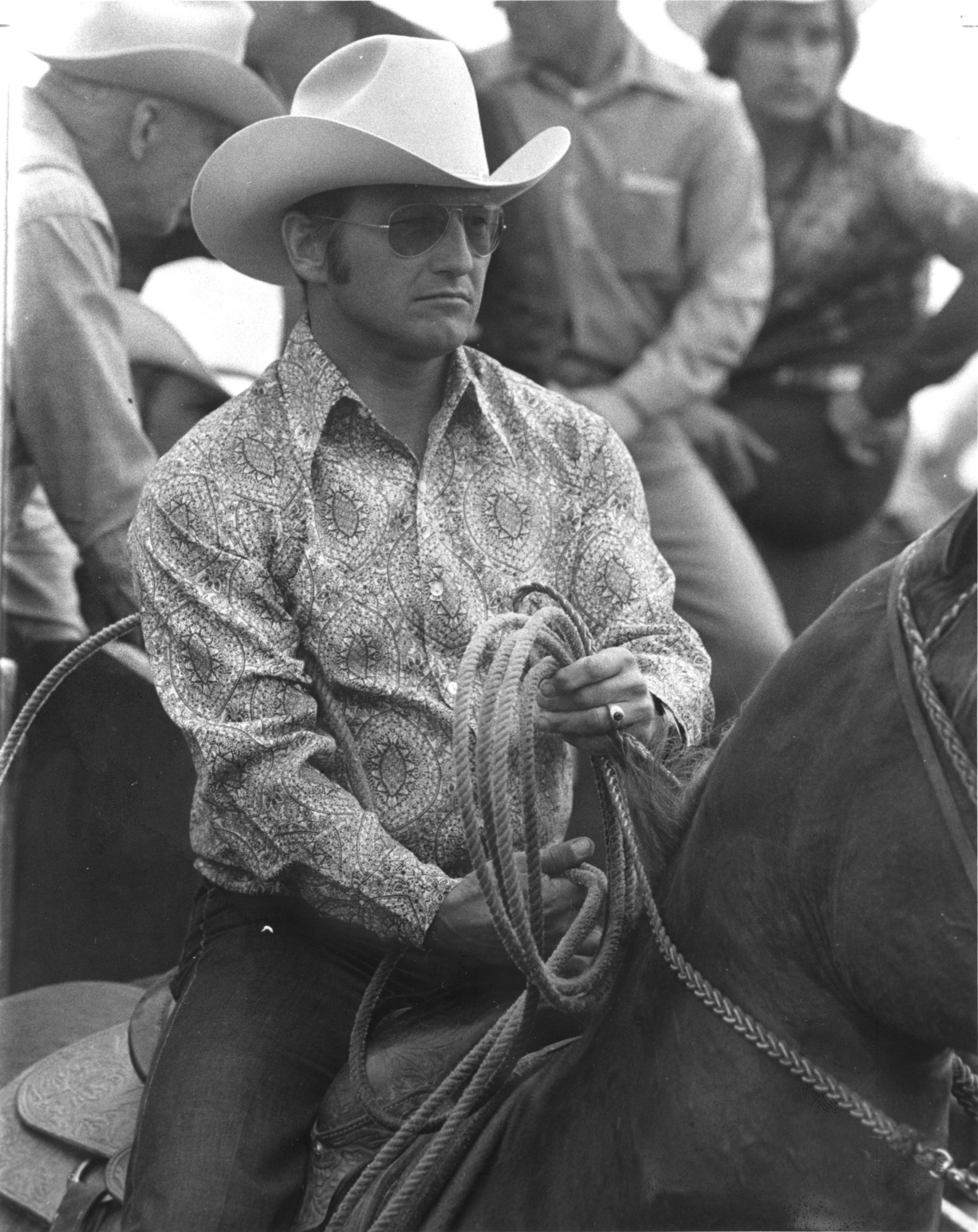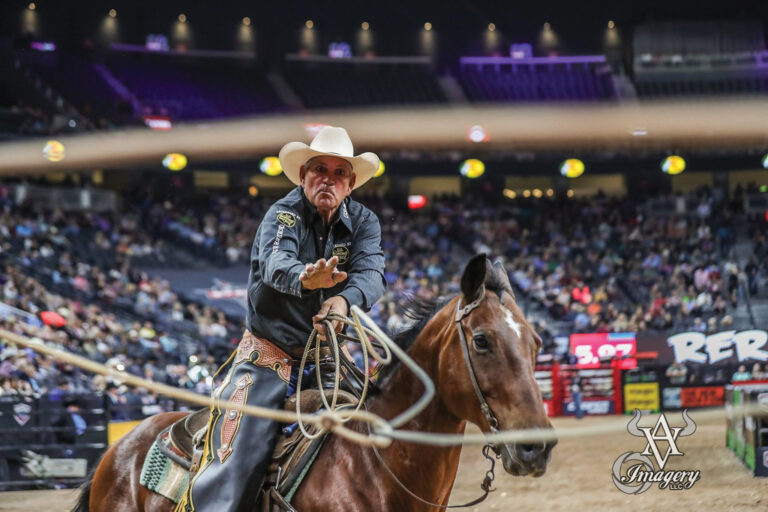Q: Who gave you the nickname The Godfather of Team Roping?
A: Perry Bigbee and Billy Pipes got that going. Billy’s always called me Don Corleone.
Q: How much did you rope in your younger years?
A: I roped calves when I was in high school, then started team roping in my mid-20s. I mostly headed, but I always brag that I headed and heeled. Sam Fancher and I won the Century Roping during the Oakdale 10 Steer when Sam was 72 and I was 28. I missed the last steer, so Sam had to head him and I ended up having to heel him.
WATCH: Rodeo Horse Practice Session
Q: When did you hang up your ropes, and why?
A: I quit roping after a series of accidents in about 1981. A horse bucked me off and broke my pelvis. I also had a car accident, and those two wrecks took a toll on my body. I missed roping a lot, but my body just wouldn’t let me compete at a very high level. I never pursued rodeoing hard. I pretty much stayed on the jackpot trail promoting the paper.
WATCH: Is Your Horse Jackpot Ready?

Anna Robertson Photo
Q: What’s the back story to you starting Ropers Sports News?
A: There were a bunch of us who’d gone to a roping in Elko, Nevada, and when we got all the way up there it was canceled. I asked around to the rest of the ropers about how they knew where to go and when. There were no cell phones and there was no internet back then, so it was mostly word of mouth. I said there ought to be a newsletter. I was working with Jack Parnell and Dean Parker in the auction business, and Jack had the California Cattleman magazine. He inspired me to start a publication for team roping, but when I looked at the cost of printing a magazine I wasn’t sure the advertisers would pay the rates needed to support that. To keep costs down, I opted to go with a black-and-white newspaper. The content was what was important. The #1 purpose of the paper was to let ropers know where they could go rope and when.
Q: What were the biggest challenges for a team roping publication back then?
A: The hardest thing was getting the biggest ropings of the day to advertise. They had their own mailing lists. So I made a deal with them—if they’d give me their mailing lists, I’d advertise their ropings and they wouldn’t have to do it. I started my mailing list with 150 names I’d gathered from guys at ropings. Another thing I remember well is a few of the ropers being worried about the IRS seeing roping results in print. They were used to pocketing cash with no 1099s.
Courtesy of Bob Feist
Q: When did you start announcing rodeos, and how did that come about?
A: I first started announcing pro rodeos in the late 1970s. I announced the 1979 National Finals Steer Roping with Clem McSpadden, and the 1980 National Finals Rodeo with Jay Harwood. A few of my favorites over the years were Reno, Santa Maria and Red Bluff, and I got to announce Salinas, Cheyenne and Calgary a time or two. I still announce the rodeo in Santa Barbara. When I was in high school, I was a speaker for the 11 Western states for FFA, and trained under Dr. Alice Lowry, who was a top professor at UC Davis and chaperoned us. I was president of the FFA at school, and emceed events. One thing led to another, and that paired nicely with my love for rodeo.
Q: What do you remember about the first BFI 45 years ago?
A: People thought I was crazy, and it was a very hard sell. Nobody believed people would pay to watch the best ropers. There were people who said, “I’m not going to pay to watch somebody who beats me.” But I was dating a tennis player, and noticed that most of the fans at tennis matches were lower-level tennis players, and the fans were there trying to learn something from the best. I thought if we made it a long score, people could see the best ropers at their best. Lex Connelly was announcing, and I only invited 40 teams. At the end of the first round, 36 of them had two-foot catches. The stats were amazing. Entry fees were $500 per man, and I guaranteed a $40,000 payoff. There were a lot of naysayers who said it would never work. But I had $40,000 in escrow at the bank. My name was never supposed to be on it, but I couldn’t find a sponsor to put their name on it. I’m very pleased that the BFI grew into such a major event.
Q: What stands out about the evolution of the roping and rodeo business in your lifetime?
A: I think the main thing in team roping today that’s changed is the horses and horsemanship. In the early days of team roping, people rode their ranch and trail riding horses. Some people roped calves, bulldogged and team roped on the same horse. Over the years, people started specializing in team roping horses. The ropes themselves have also changed significantly. When I started roping, we team roped with grass ropes that were very temperamental and dependent on the weather. Then there were poly ropes, and you couldn’t wear them out. After that, they started mixing nylon and poly together. Today’s ropes allow people to be faster. The consistency of the feel of the ropes has made a huge difference.
Q: What do you consider your career highlight and greatest contribution to the sport?
A: Probably starting the BFI. It allowed the better team ropers a place to go. It also allowed the amateur ropers the chance to watch the best ropers perform, and to view the videos. Going all the way back, I tried to ride bulls, which was a disaster. I realized that people can rope most of their lives. That longevity is part of what makes team roping a great event.
Q: How do you want to be remembered 100 years from now?
A: I’d like to be remembered as fair and honest, and someone who fulfilled some of the industry’s needs. A lot of change has come about in my lifetime. To have helped lay the foundation for what team roping is today makes me proud.











